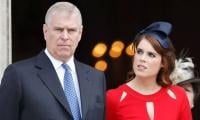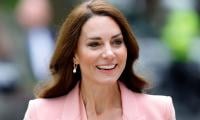KIBOR hits 13.4-year high; rate hike bets jump
KARACHI: The six-month Karachi interbank offered rate (KIBOR) soared to over-13-year peak this week after a sharp jump in Treasury bill yields, prompting bets on another interest rate hike to contain runaway double-digit inflation.
The KIBOR stood at 15.24 percent on Friday, the highest level since January 2009, data from Arif Habib Limited, a brokerage house, showed. The six-month KIBOR rose by six basis points on a day-on-day basis. It was 15.18 percent on Thursday.
The SBP raised the policy rate by 150 bps to 13.75 percent. The next policy review is due on July 7.
“Increase in KIBOR is due to expected interest rate hike along with higher inflation going forward in anticipation of the recent increase in petroleum prices, proposed electricity tariff increase and an uptick in food inflation as well,” analyst Arif Abbas at Arif Habib Limited told The News. The government in the last 10 days increased petroleum products prices by 37 percent, also approved hike in gas prices up to 45 percent and electricity charges by Rs7.91 per unit. “With all such measures, inflation may cross 20 percent in upcoming months,” Abbas added. The yields on the short and long-dated T-bill jumped to 15 percent in the last auction held on Wednesday on elevated inflation number in May. The consumer price index (CPI) inflation rose to over two years high, clocking in at 13.76 percent in May led by soaring food and fuel prices. However, the inflation numbers are slightly better than market expectations of 14-14.5 percent.
Analysts said yields on T-bills and PIBs are expected to decline in the days ahead after the State Bank of Pakistan conducted a 63-day open market operation (second time in a week to bring stability to the secondary market rates. The SBP provided banks with total liquidity of Rs1.475 trillion.
The government borrowed aggressively in the last auction so it sold the bonds and bills at higher yields. The reason is its funding needs are growing. And its financing avenues are limited due to the lack of foreign assistance amid delays in the revival of the IMF loan programme. “The SBP in its latest monetary policy statement intimated that policy rate and cut-off rates will be aligned. It also injected liquidity through a 63-day OMO,” Tresmark said in a report.
Yet the finance ministry gave a cutoff of about 55-75 bps higher than the previous cut off and that was not aligned with the policy rate. “This is a case of sheer incompetence but sends confusing signals to markets,” the report said. “The SBP and the ministry of Finance should also strengthen communication urgently before higher than necessary KIBOR levels impact repayment capabilities.” It added that the rise in the borrowing cost is not a healthy sign for the private sector credit growth. “The costly loans are likely to slow down the demand for bank lending from large and small businesses as well as consumers. “
-
 Why Royal Lodge Fell Into Disarray Under Andrew: Insider Exposes Loophole
Why Royal Lodge Fell Into Disarray Under Andrew: Insider Exposes Loophole -
 Hoda Kotb 'so Proud' As Today 'magic Reignites' With Sheinelle Jones
Hoda Kotb 'so Proud' As Today 'magic Reignites' With Sheinelle Jones -
 Kate Middleton Avoids Nanny Involvmenet In Prince George Matters
Kate Middleton Avoids Nanny Involvmenet In Prince George Matters -
 Colin Jost Jokes About Scarlett Johansson Losing Highest-grossing Actor Crown To Zoe Saldana
Colin Jost Jokes About Scarlett Johansson Losing Highest-grossing Actor Crown To Zoe Saldana -
 ‘Traitor’ Prince Harry Has ‘spooked’ His Family: ‘He Has To Pay A Price Of Re-entry’
‘Traitor’ Prince Harry Has ‘spooked’ His Family: ‘He Has To Pay A Price Of Re-entry’ -
 Andrew’s Daughter Princess Eugenie Sparks Seismic Change After Stepping Away
Andrew’s Daughter Princess Eugenie Sparks Seismic Change After Stepping Away -
 Meghan Markle Shares NEW Photos From Day Out At The Zoo
Meghan Markle Shares NEW Photos From Day Out At The Zoo -
 'Game Of Thrones' New Series Returns To 'home'
'Game Of Thrones' New Series Returns To 'home' -
 Prince Harry Touches Down In Heathrow For The Witness Box
Prince Harry Touches Down In Heathrow For The Witness Box -
 Harry’s Turmoil Turns To Agony Over Meghan Markle’s Hope: ‘Time Will Tell If He’ll Bare It’
Harry’s Turmoil Turns To Agony Over Meghan Markle’s Hope: ‘Time Will Tell If He’ll Bare It’ -
 Reese Witherspoon Jokes About Jennifer Garner’s 'dark Side'
Reese Witherspoon Jokes About Jennifer Garner’s 'dark Side' -
 'Lion King' Co-director Roger Allers Breathes His Last At 76
'Lion King' Co-director Roger Allers Breathes His Last At 76 -
 Prince Harry’s Security ‘isn’t Just For His Family’: Expert Rewires Security Woe
Prince Harry’s Security ‘isn’t Just For His Family’: Expert Rewires Security Woe -
 Prince Harry Risks Making King Charles Choose Between Queen Camilla And Military Duty
Prince Harry Risks Making King Charles Choose Between Queen Camilla And Military Duty -
 Kate Hudson Jokes She May Write A Script To Star Alongside This Actress
Kate Hudson Jokes She May Write A Script To Star Alongside This Actress -
 Inside How Kate Middleton Stayed Steady Amid Cancer And Royal Chaos
Inside How Kate Middleton Stayed Steady Amid Cancer And Royal Chaos



